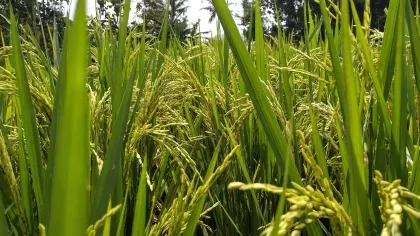2 October 2017
Calm after the storm
Wakehurst’s Garden Manager Chris Clennett revisits the Great Storm of 1987, when the estate lost 20,000 trees, and explains how the landscape has since been transformed.

On the night of 15 October 1987, and the early hours of the following morning, the worst storm in 200 years swept through the UK, with winds reaching 115mph in the south-east. Worst hit were the counties of Sussex, Suffolk and Kent.
It is now 30 years since that Great Storm, but many of us still have vivid memories of that night and its aftermath. The storm was in many ways a cataclysmic event at Wakehurst. The estate was a very settled place at that time, with mature gardens and woodlands dominated by dense tree and shrub planting and a brand new Winter Garden just completed by the Mansion.
By the morning of 16 October, all that had changed. Around 5,000 trees were lost in the garden areas and around 20,000 across the whole estate.
The scenes of devastation were hard to comprehend, to the extent that a group of staff venturing out rapidly became lost in our own garden, as many of the landmarks had disappeared.
At the time it seemed as though the very future of Wakehurst would be in doubt. What would be the point in Kew investing in an estate of mature specimen trees when so many of them had been lost? Fortunately, with the hindsight of thirty years, we can see that new opportunities opened up and the storm actually turned out to be beneficial in some ways.
Chris Clennet was living on-site at the time of the storm.
A large scale clearance of old trees may appear to be a disaster, but senior members of staff Tony Schilling and Mark Flanagan saw through this, planning a new beginning for Wakehurst.
The phytogeographic planting scheme arose phoenix-like, grouping newly collected wild sourced trees according to their country of origin, rather than planting them with related species.
Wakehurst now has woodlands based around the forests of eastern Asia, North America, South America, Australasia and the Mediterranean. This means that our visitors can take a walk through the temperate woodlands of the world. As new field collections were made, collaborating with other institutes, further areas of woodland have been developed, to the point where most of that initial scheme is now planted and maturing.
In the upper gardens, large tracts of land opened up, allowing the development of the Tony Schilling Asian Heath Garden. This simulation of eastern Asian montane habitat has been something of a challenge. West Sussex has a climate very different to that of mountainous central and eastern Asia, so growing some of these plants can be difficult. However, moving montane rhododendrons to this new garden also allowed the gradual development of the Southern Hemisphere Garden on the west side of the Mansion, grouping together unusual shrubby plants from this fascinating part of the world.
Many of the challenges we faced in 1987 remain difficult to overcome. The Sussex climate has altered significantly over the last thirty years. Extremes of weather are more frequent, autumns are later, winters are wetter and springs often drier.
The developments undertaken after the Great Storm have transformed Wakehurst into the garden it is today. As in all gardens, things move on and the last 30 years represent only one phase in the long life of the estate. Lots of exciting changes are planned to alter the planting and design of much of the upper gardens, retaining some of those themes established in 1987, but interpreted in a new way.


.jpg.webp?itok=g86-0o6S)